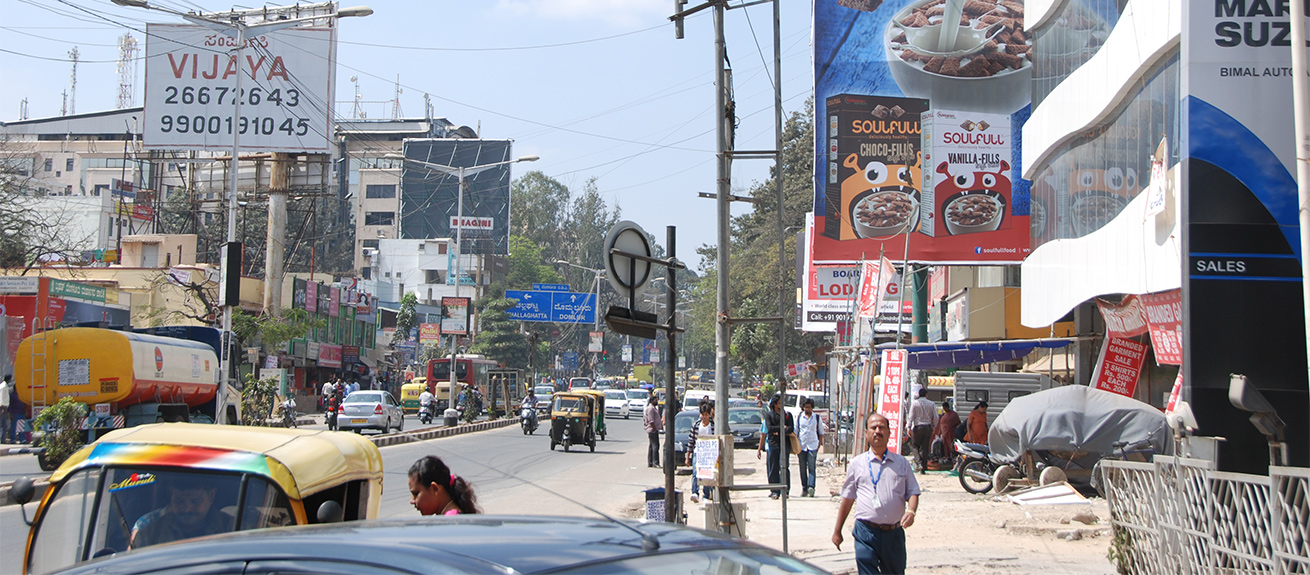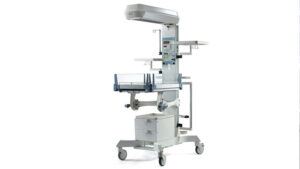
In the field with GE Healthcare India
At a glance
- The growth focus in emerging markets is shifting from big mega cities to semi-urban and rural areas.
- Serving low-resource business customers in these settings is a formidable task.
- GE Healthcare India decided to take on the challenge and developed a new infant warmer.
- The successes and bumps along this journey offer three fresh lessons for other manufacturers.
India has the world’s highest record of neonatal deaths, many of which are closely associated with hypothermia. In 2013 alone, 750,000 such deaths were recorded, according to a UNICEF report.
GE Healthcare India’s Maternal Infant Care (MIC) division had applied a “frugal innovation” strategy to develop its Lullaby Warmer (LW) – a baby warmer used to treat hypothermia in newborn babies – as a way to address the acute need for such appliances. It was expected that the LW would help governments in emerging countries win the fight against infant mortality. However, although by 2012 GE Healthcare had sold thousands of LWs all over the world and captured many new customers in the process, it did not manage to reach the facilities located in semi-urban and rural India – a customer group that we refer to as low-resourcebusinesscustomers. What could GE Healthcare do to win in these markets?
The broader issue
Western multinationals like GE Healthcare are lured to emerging markets by forecasts of high gross domestic product (GDP) growth and an ever-expanding middle class. They aspire to capture a share of the immense market potential by developing and distributing “customized” products and solutions. Upon closer examination, many of these products are essentially modifications of existing Western designs with a “twist” of local customization. Quite often, the narrative is that global multinationals target the upper segments of the population in these countries with sleek, multi-featured, expensive models (high value, high price) and keep the more basic, less expensive versions for the middle and low segments (low value, low price). Given that their target cus- tomers are typically private facilities, located in tier I cities (with a population of several million), these corporations use a standard sales and distribution model that combines a direct sales force and a handful of distributors.
However, the growth focus now is shifting from the mega cities to smaller cities and rural areas (low- resource settings) and there is increasing pressure on government to improve the standard of services in these places. As a result, the current strategy of many multinationals is no longer a ticket to success in emerging markets. To date, many B2B companies appear to be unfit to serve these customers well. Much like understanding the needs of low-income consumers in business-to-consumer (B2C) mar- kets, managers must gain a better knowledge of low- resource customers in B2B markets.
Unique challenges for manufacturers
Low-resource business customers face challenges that manufacturers may not have considered, such as tough operating conditions for machinery (energy inter- ruptions, limited water supply, heat, dust, etc.), short supply of skilled workers (including operators and technicians), and facilities that are difficult to serve due to poor infrastructure and lack of market data. Further- more, although there is a modest budget for capital expenditure (especially in the private sector), resources for maintenance and service are extremely limited.
B2B companies often focus their efforts solely on product innovation when entering emerging markets. This is necessary, but it is not a sufficient condition for success. Beyond mastering product innovation, B2B firms must develop novel commer- cial expertise, given that the interaction with the customer is not a straightforward process. For example, the purchasing cycle – responding to prod- uct information requests, providing a quote, secur- ing payment, delivering and setting up the equipment, and provid- ing basic training – can con- sume an enormous amount of time and energy. Companies need to revisit their sales and distribution strategy and work out an efficient and pain free way to reach and serve these facilities.

From defeaturing to user-centered product design: LullabyTM Warmer (above) and LullabyTM Warmer Prime (below).

The mantra was “do not talk to the experts” to highlight that its people had to think differently and avoid the “I know it all” trap. The MIC staff interviewed over 250 people based in low-resource environments in several countries. Some of the physicians and hospital staff they spoke with had never even seen a modern baby warmer before. The engineers then used the data collected to quickly develop and test “low-fidelity” prototypes that had some of the target product’s characteristics. This was a break from its usual practice of developing the best possible prototype before sharing it with potential customers. The MIC team also dared to defy the myth that a product destined for such environments should look and be cheap.
LWP had a compact structure with only two moving parts, and malfunctioning modules could easily be unclipped and replaced. It also had a sleek design and technology that was on a par with or better than current GE warmers, including a patented “J-profile” design that reflected heat uniformly, increasing comfort for the caregiver, and a reusable temperature probe made of Kevlar (the material used in bulletproof vests). GE Healthcare introduced LWP in India in December 2013 and globally in 2014. This was less than two years after development began.
To enhance adoption of LWP, the company also employed fast commercial prototyping. Rather than waiting to have the “complete” solution, which was approved by everyone, the MIC division redesigned its network of distributors, experimented with new sales channels (including online and over the phone selling) and various payment options, and piloted public–private partnership programs with aid organizations in the states of Bihar and Odisha. It also introduced various packages with prices ranging from $1,000 to $1,500 as well as a selection of accessories, warranty lengths and service plans, making the LWP 50% to 70% less expensive than the LW, but still with a healthy profit margin.
Did it work?
A year after LWP’s launch, GE Healthcare had succeeded in reaching customers in tier II and tier III cities in India and several Asian and African countries, where the product was a big hit with small family-run clinics. The next major target for the company was rural areas and the public healthcare sector, which comprised district and sub-district hospitals as well as modest community health centers.
Reaping the benefits
The successes and bumps along the LWP journey offer three fresh lessons for other B2B companies that want to serve low-resource customers in an effective and profitable way:
- Confront the unique challenges posed by low-resource business customers. You need to gauge the implications for your product development, marketing strategy and sales model.
- No more defeaturing. New products should be designed from scratch and incorporate the best available technology.
- Product innovation and commercial innovation should go hand in hand. Use fast commercial prototyping to design the go-to-market model in parallel with product development.
THIS ARTICLE IS BASED ON THE AUTHORS’ AWARD-WINNING IMD CASE SERIES: IMD-5-0800 TO IMD-5-0802, 2015, AVAILABLE FROM THE CASE CENTRE AT WWW.THECASECENTRE.ORG.
Research Information & Knowledge Hub for additional information on IMD publications
The B case outlines how, by early 2025, Isabella Phoenix's initial vision for HP's Amplify Impact sustainability program had grown into a global initiative involving 4,800 partners in 48 countries. The program surpassed its goals, enrolling 59 of ...
The A case in this two-part series outlines the challenges Isabella Phoenix faced in designing a global sustainability program for HP's vast network of channel partners in just 12 weeks with only one team member and limited resources. The initiati...
Last week, a notification flashed. “Add your email address for extra security,” my phone chirped. It was from WhatsApp. I stared at the screen, a single question forming in my mind: Security? Or surveillance? I tapped “No.” The feeling wasn’t ange...
In today’s boardrooms, two themes dominate: rapid technological advancement and the growing urgency of environmental accountability. But a new source of competitive advantage is emerging, not from A.I. or sustainability alone, but from the deliber...
Research Information & Knowledge Hub for additional information on IMD publications
in I by IMD
Research Information & Knowledge Hub for additional information on IMD publications
Research Information & Knowledge Hub for additional information on IMD publications
Case reference: IMD-2681 ©2025
Research Information & Knowledge Hub for additional information on IMD publications
Research Information & Knowledge Hub for additional information on IMD publications
in I by IMD
Research Information & Knowledge Hub for additional information on IMD publications
Research Information & Knowledge Hub for additional information on IMD publications
in I by IMD
Research Information & Knowledge Hub for additional information on IMD publications
Research Information & Knowledge Hub for additional information on IMD publications
Research Information & Knowledge Hub for additional information on IMD publications






